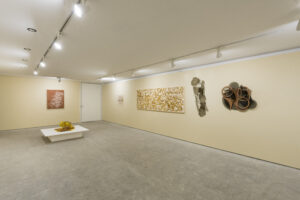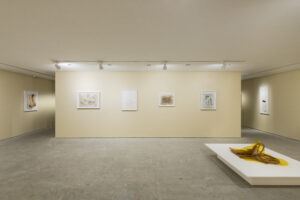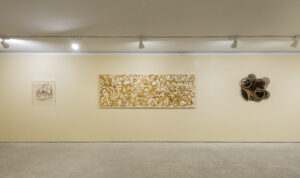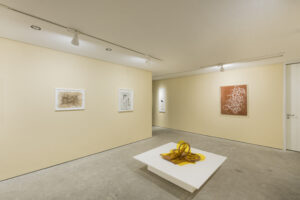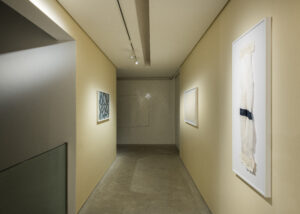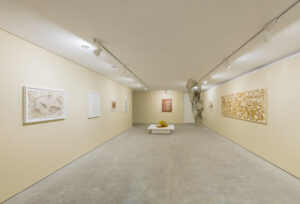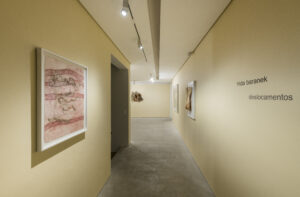frida baranek_displacements
08 jun_2024 - 10 aug_2024
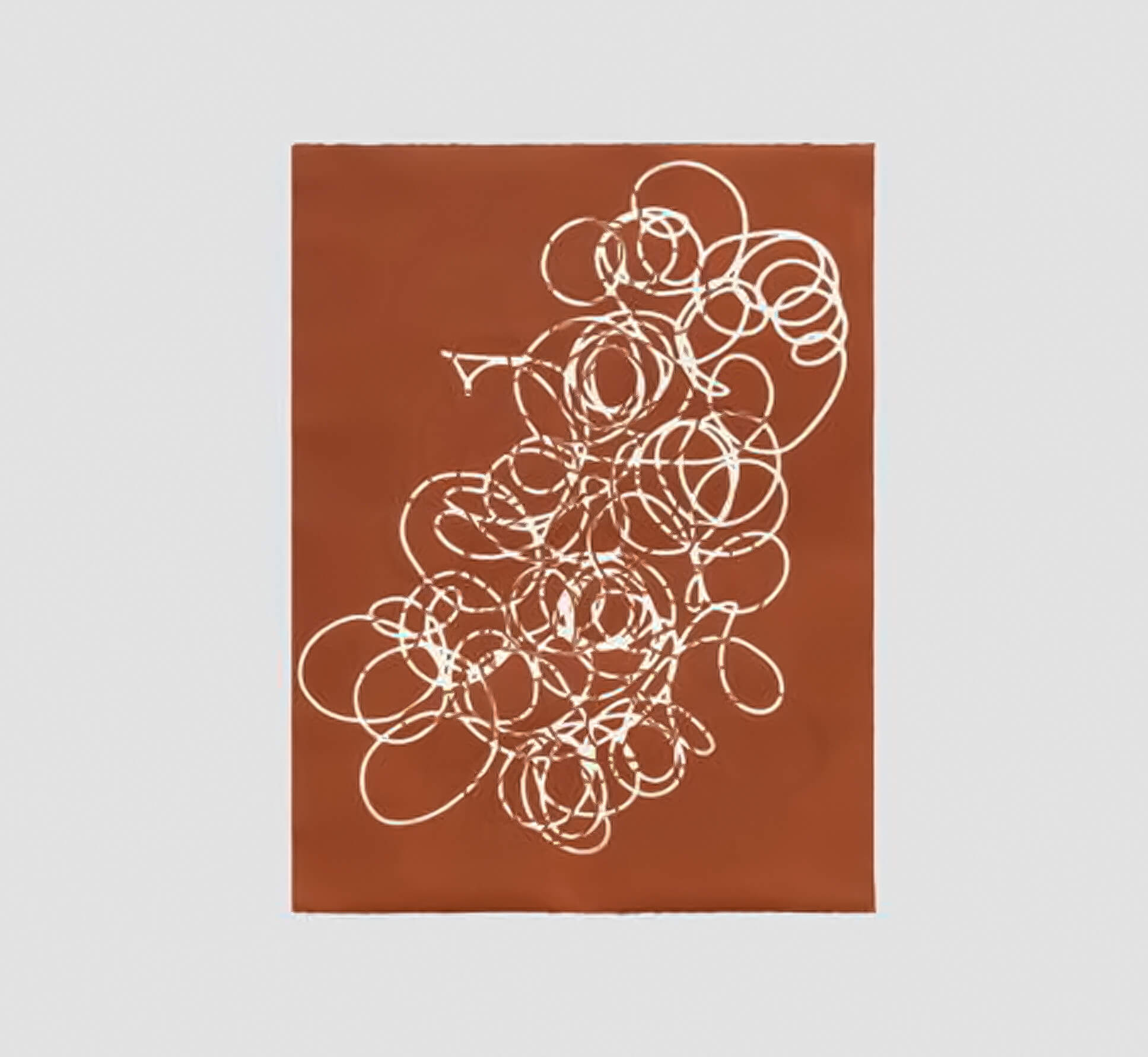
Among the many reinventions of modernity lies the fact that we have gradually shifted the place and state of social relations. If in the Middle Ages the aim was to endure and establish fixed and immutable bonds, in contemporary times displacement and malleability are key to understanding a new and flexible world. The theory above, expounded by Polish philosopher Zygmunt Bauman (1925-2017), evolved through the labyrinth of the human mind and brought reflections, as well, on the consequences of this fluidity which, among other aspects, leads us to displacements that often cause the misleading sensation that we are out of place, perhaps in the wrong time, too early or too late in the historical context in which we are all inevitably embedded. It is upon this mobile and diverse path that Displacements, an exhibition by carioca artist Frida Baranek at Galeria Raquel Arnaud, focuses.
Baranek’s own trajectory underscores this line of thought. From an early age, the artist traverses the world, inhabiting various countries and adapting in a versatile manner to her surroundings – from São Paulo to Lisbon, passing through Berlin, London, New York, and Paris. A natural observer of her surroundings, Baranek appropriates them through materials she gathers along the way. She focuses much of her research on the materiality of the world and, from it, proposes new formats: sometimes disfiguring it in certain processes and, in others, reinforcing its potency. The fluidity with which she moves her body through physical space becomes evident in the pulp and water that compose the papers, serving as guiding thread for the viewer in the current show.
This layer of cellulose, which in the hands of the artist takes on various shapes and textures, has been part of her trajectory since the 1990s, when, during a project carried out in Germany, she was challenged to create a series of works from this material. From the very beginning, the fluid mixture took shape in physical masses that highlighted Baranek’s creative process – even in two-dimensional form, the artist works intuitively and sculpturally. Experimenting with and transforming materials are natural mechanisms for Baranek, who skillfully navigates between various artistic mediums, from her recognizable large-scale sculptures to the mobility present in a pigment that is added to the paper.
Over time, and with the intimacy gained with the material, the artist began to craft her own mixture of pulp and water, which led her to experiment with reliefs and grammage, incorporating, as well, possible materials into the composition of her series, such as silk threads, iron dust, and wires. At a certain point, she appropriated the collagraph technique, in which prints are made through plastic plates, more malleable and allowing for a higher degree of experimentation and interference.
If, in the past, such displacements led the artist to predominantly create labyrinthine bodies, today Baranek provokes reflections on impermanence by working with layers crafted in simpler and more geometric forms. The disconnection and fluidity of modern and contemporary life, of which Bauman spoke in his theories, reappear subjectively in the two sculptures present in the space – and which bear the name of this exhibition. Made of wood – the raw material of cellulose – and acrylic, the works guide the thought and current work of Baranek, who enjoys the freedom of the material to present her new overlays. With the illusion that we can fit such geometric shapes that are presented here in an apparently uncomplicated manner, we are enveloped by layers proposed by her, and thus we move within the subtlety of possibilities.
Ana Carolina Ralston
curator
exhibitions images
